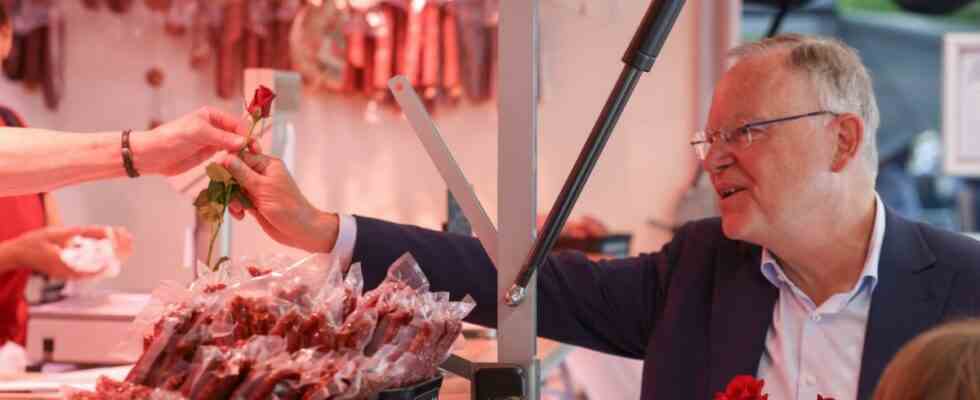On Saturday, the CDU, the last of the major parties, heralded the hot phase of the state election campaign in Lower Saxony with a kick-off event in Osnabrück. The election will take place on October 9th. After Saarland, Schleswig-Holstein and North Rhine-Westphalia, it is the last state election this year, and in many respects it is very special.
On the one hand, it is an election in which national political issues are almost completely pushed into the background. The dominant topic is the energy crisis as a result of the war in Ukraine and the question of how citizens can be relieved in the face of skyrocketing prices. And Lower Saxony is the state that plays a special role when it comes to energy.
Germany’s largest gas storage facility is located in Lower Saxony, and a large liquid gas terminal is being built in record time in Wilhelmshaven, which is crucial to becoming independent of Russian gas. Lower Saxony not only has the most wind turbines, but also the largest natural gas deposits that Germany itself has. And the smoldering debate about extending the service life of the last three nuclear power plants could hold particular fuel in the final phase of the election campaign in the country, which is one of the nuclei of the anti-nuclear movement.
On the other hand, the election also has federal political significance, and the three traffic light parties could be affected very differently. For the SPD, the hope of starting a winning streak in the federal states after winning the federal elections has not been fulfilled. The Social Democrats clearly won in Saarland in March and conquered the state chancellery with Anke Rehlinger, but it was just the small Saarland.
The SPD relies on the office bonus of its prime minister
In Schleswig-Holstein and North Rhine-Westphalia, on the other hand, the CDU clearly won (which decisively stabilized the new CDU party leader Friedrich Merz) and even worse for the SPD, in both countries there is now a black-green state government, which from a perspective of the SPD could be a warning sign for future coalitions at federal level. The SPD is therefore hoping for a turnaround in Lower Saxony and is relying on the office bonus of its Prime Minister Stephan Weil. With the exception of Saarland, all state elections this year and last year showed how important this official bonus is.
The Greens, on the other hand, are counting on the upswing they have been in since the federal elections to continue, while the FDP must try to stop their horror series in the state elections. In Saarland, the Liberals were kicked out of the state parliament altogether, in Schleswig-Holstein and North Rhine-Westphalia they were no longer needed for a government majority. The CDU, in turn, as the largest opposition party in Berlin, would like to continue its winning streak in the state elections and thus put further pressure on the traffic light coalition.
CDU top candidate Bernd Althusmann is open to a new edition of the grand coalition, of course under his leadership.
(Photo: Sina Schuldt/dpa)
But that could be difficult. Even before the summer break, the SPD was ahead in all polls and nothing has changed since then, despite the public discussion about the technical errors of the traffic lights in the first two relief packages. In the three current surveys by the institutes Insa, Forsa and Infratest Dimap, the SPD is predicted to gain between 29 and 31 percent, putting it ahead of the CDU, which is between 26 and 28 percent.
The Greens would be the third strongest force, well ahead of the other parties. They have continued to increase in the polls since spring and can expect a result of between 19 and 22 percent. Should that actually happen in the end, the Greens would be the big winner of the election, because five years ago they had only achieved 8.7 percent in Lower Saxony. The FDP is between six and seven percent in the polls and has to fear that it will end up behind the AfD, which comes to seven to eight percent. The left, which is bobbing in the polls at three to four percent, should have little chance of entering the state parliament.
If there are only minor shifts on election night, it will not be decisive who ultimately comes out on top. But which coalition is most likely. As things stand, there are three constellations, each with a clear majority. Red-Black (or Black-Red, as the case may be), Red-Green, and Black-Green.
It’s getting bitter for the FDP
That the grand coalition between SPD and CDU will continue is the most unlikely case, although they worked together far more smoothly than was feared five years ago. Because it was a makeshift, an “alliance from ancient times,” as the SZ wrote at the time. The last grand coalition in Hanover broke up in 1970, and since then the CDU and SPD have faced each other more bitterly than in almost any other federal state. But because the FDP refused a traffic light and the Greens rejected Jamaica, the SPD and CDU had no choice but to join forces willy-nilly.
CDU top candidate Bernd Althusmann is open to a new edition, of course under his leadership. But SPD Prime Minister Stephan Weil is clearly heading for red-green. Greens top candidate Julia Willie Hamburg also repeatedly emphasizes the large overlaps with the SPD, but likes to add that there is still no automatism, which gives the CDU hope to win the Greens for Black-Green after all.
But no matter which constellation emerges at the end – it would be very bitter for a Berlin traffic light partner: The FDP has to fear that in future it will only be needed to govern in exceptional cases.

